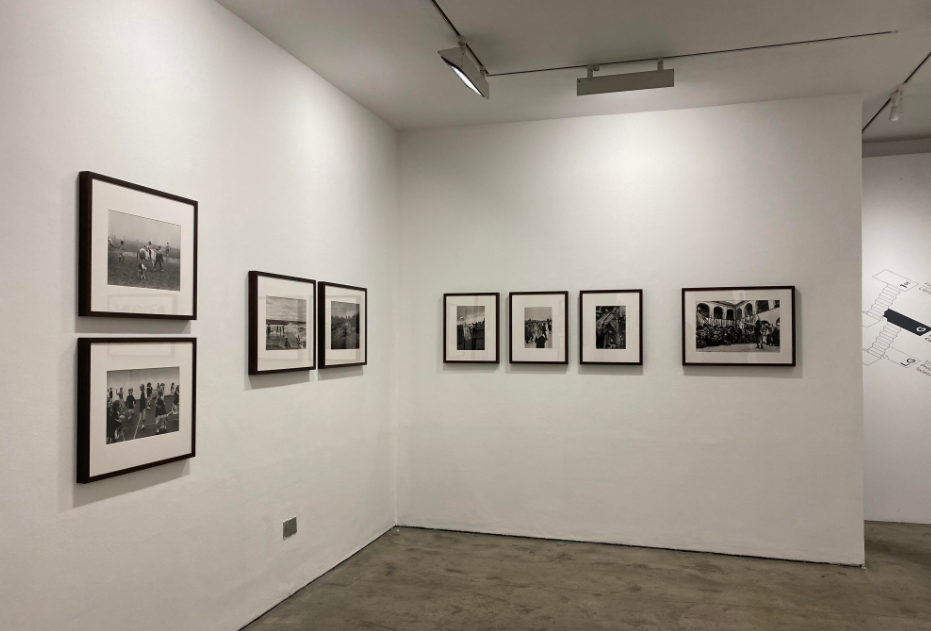Markéta Luskačová is a Czech social photographer, born in 1944, who has worked in the industry since 1968. She has worked in the Czech Republic, Slovakia, Poland, Ireland, and Great Britain. The current display of her black and white film at Stills is the first exhibition of her work in Scotland. In 52 images, there are ten series of photographs in the collection from the 1960s to 2008. Aided by three poems Luskačová selected, the exhibition captures the essence of childhood in communities on the verge of disappearing in a time of technological and environmental change—the unseen threat of disinterested progress.
Across one floor, you can see the temporal and geographical shifts in Luskačová’s nearly six-decade-long career. The gallery’s first section displays some of her earliest photographs, taken in black and white film due to economic necessity and occasionally grainy because Luskačová used the wrong film for the camera. The early series pinpoints when she was a resident photographer at an arts theatre. Whether on a stage or not, the exhibition conveys Luskačová’s interest in capturing moments of movement and stillness. The gallery director, Ben Harman, described her work as portraying humans as ‘actors in a crazy play.’ The space people occupy in Luskačová work goes from art theatres to interior and rural environments in Ireland, where she frugally lived in the 1970s.
The snapshots of London deployed showcased Brick Lane, as we don’t remember, before the gentrification. In a surreal image, Luskačová, having followed the unsuccessful progress of a man trying to sell a lion cub, photographed the moment a dog and the cub met face to face. A commission from Magnum Photographic Agency sent her to Chiswick Women’s Aid, at the time, the only shelter for victims of domestic violence in London. In the exhibition, a photograph of women and children piled into sleeping quarters is juxtaposed by a later image of nap time at an all-girls school. In a curator’s tour, Harman talked about how Luskačová sent the photographs with an idea of how to display them and what pairings she thought would best enhance the work.
Images taken from a Channel 4 Commission, Project 2000 and areas in the northeast of England are in the second half of the room. Luskačová candidly photographed children playing freely with one another. There are scenes of boys in a playground, one threatening his small fist at another. Luskačová pauses movement in an image of a girls’ school; her camera focuses on a lone girl disconnected from the careless play of her peers. According to Harman, Luskačová’s photographic practice was not voyeuristic; children and adults were asked for consent and relationships relying on trust were built.
This exhibition shines a light on a photographer that we all should know. Luskačová has worked in a male-dominated medium for decades, taking images of childhood innocence, unaware of the societal shifts coming their way. A viewer could find many ways to relate to these snapshots of childhood and community, made timeless by their consistent use of black-and-white film.
Markéta Luskačová at Stills runs from 12 August – 7 October 2023.
Image of Markéta Luskačová’s exhibition installation at Stills Edinburgh taken by Rachel Hartley on 21 September 2023.

